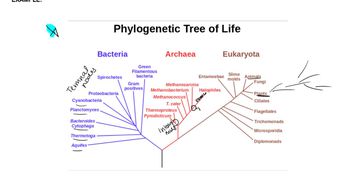Denisovans are known from bones found in Denisova Cave in the Altai Mountains in Siberia, but traces of their DNA are found in Australians and Melanesians, whose ancestors likely migrated across Asia much farther to the south. How can these geographic differences be reconciled?
Table of contents
- 1. Introduction to Genetics51m
- 2. Mendel's Laws of Inheritance3h 37m
- 3. Extensions to Mendelian Inheritance2h 41m
- 4. Genetic Mapping and Linkage2h 28m
- 5. Genetics of Bacteria and Viruses1h 21m
- 6. Chromosomal Variation1h 48m
- 7. DNA and Chromosome Structure56m
- 8. DNA Replication1h 10m
- 9. Mitosis and Meiosis1h 34m
- 10. Transcription1h 0m
- 11. Translation58m
- 12. Gene Regulation in Prokaryotes1h 19m
- 13. Gene Regulation in Eukaryotes44m
- 14. Genetic Control of Development44m
- 15. Genomes and Genomics1h 50m
- 16. Transposable Elements47m
- 17. Mutation, Repair, and Recombination1h 6m
- 18. Molecular Genetic Tools19m
- 19. Cancer Genetics29m
- 20. Quantitative Genetics1h 26m
- 21. Population Genetics50m
- 22. Evolutionary Genetics29m
22. Evolutionary Genetics
Phylogenetic Trees
Problem D.14
Textbook Question
The mtDNA sequence of Neanderthals is more similar to that of modern humans than to that of Denisovans. However, analyses of nuclear DNA clearly indicate that Neandertals and Denisovans share a more recent common ancestor than either of these hominins shares with modern humans. Propose a hypothesis to resolve the discrepancy between the mtDNA and the nuclear genome.
 Verified step by step guidance
Verified step by step guidance1
Step 1: Understand the difference between mitochondrial DNA (mtDNA) and nuclear DNA. mtDNA is inherited maternally and does not recombine, while nuclear DNA is inherited from both parents and undergoes recombination, providing a broader picture of ancestry.
Step 2: Recognize that the discrepancy arises because mtDNA shows Neandertals closer to modern humans, whereas nuclear DNA shows Neandertals and Denisovans as more closely related. This suggests different evolutionary histories for mtDNA and nuclear DNA.
Step 3: Consider the possibility of introgression or gene flow events. For example, mtDNA from modern humans could have replaced the original Neandertal mtDNA through interbreeding, leading to Neandertals having mtDNA more similar to modern humans despite their nuclear DNA reflecting a closer relationship to Denisovans.
Step 4: Formulate a hypothesis that explains this pattern, such as a scenario where Neandertals acquired modern human mtDNA via hybridization, while their nuclear genome retained the ancestral relationship with Denisovans.
Step 5: Suggest further analyses to test this hypothesis, such as examining the timing and extent of gene flow events, and comparing additional genetic markers to see if similar patterns exist.
 Verified video answer for a similar problem:
Verified video answer for a similar problem:This video solution was recommended by our tutors as helpful for the problem above
Video duration:
6mPlay a video:
Was this helpful?
Key Concepts
Here are the essential concepts you must grasp in order to answer the question correctly.
Mitochondrial DNA (mtDNA) Inheritance
mtDNA is inherited maternally and does not recombine, making it a useful tool for tracing maternal lineages. Because it represents only the maternal ancestry, mtDNA can show different evolutionary relationships compared to nuclear DNA, which is inherited from both parents.
Recommended video:
Guided course

Organelle Inheritance
Nuclear DNA and Phylogenetic Relationships
Nuclear DNA contains the majority of genetic information and is inherited from both parents, reflecting the combined ancestry of an organism. Analyses of nuclear DNA provide a more comprehensive view of evolutionary relationships and can reveal recent common ancestors that mtDNA alone might not detect.
Recommended video:
Guided course

Phylogenetic Trees
Introgression and Gene Flow Between Hominin Groups
Introgression refers to the transfer of genetic material between species or populations through hybridization and backcrossing. Gene flow between Neandertals, Denisovans, and modern humans can cause discrepancies between mtDNA and nuclear DNA phylogenies, as mtDNA may reflect past hybridization events or replacement of mitochondrial lineages.
Recommended video:
Guided course

Mapping Genes
Related Videos
Related Practice
Textbook Question
373
views


